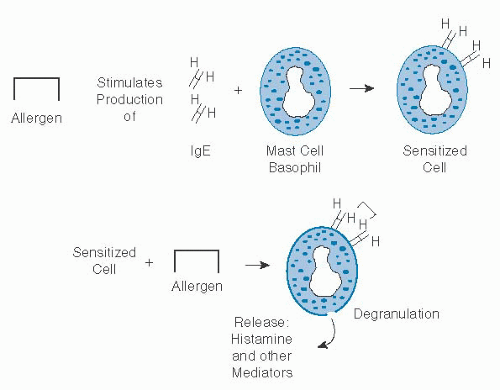The Food and Agriculture Organization (FAO) of the United Nations has established that peanuts, soybeans, fish, crustacea, milk, eggs, tree nuts, and wheat are the most common allergenic foods on a worldwide basis (
21). Perhaps 90% of all IgE-mediated food allergies are caused by these eight foods or food groups, sometimes referred to as the big eight. The big eight actually involves many more than eight foods because several food groups are included. Fish refers to all species of finfish, although some species of fish such as cod and salmon are more commonly allergenic than others (
22,
23). Shrimp, prawns, crab, lobster, and crayfish are included in the category of crustacea; most individuals with crustacean allergy are sensitive to all species (
24). Egg-allergic individuals are allergic to the eggs of all avian species (
25). Furthermore, both egg white and egg yolk contain allergens (
26), although egg white is considered to be the more potent sensitizing fraction. Milk-allergic individuals are primarily sensitized to cows’ milk, but typically are also reactive to the milk of other species, including goat and sheep (
27). The commonly allergenic tree nuts include almonds, walnuts, pecans, cashews, Brazil nuts, macadamias, pistachios, hazelnuts (filberts), hickory nuts, chestnuts, and pine (pinyon) nuts (
2). Although sometimes included in the tree nut category, coconuts, kola nuts, and shea nuts are rarely, if ever, allergenic. Cross-reactions do not inevitably occur with closely related foods. Although there are several hundred species of edible legumes, peanuts and soybeans account for the vast majority of legume-related food allergies. However, several other legumes, including lentils, beans, and garbanzo beans (chickpeas), occasionally have caused serious allergic reactions (
28,
29).
Although the eight most commonly allergenic foods and food groups account for more than 90% of all IgE-mediated food allergies on a global basis, more than
160 other foods have been documented in the medical literature on one or more occasions to elicit food allergies (
30). Any food that contains protein has the potential to elicit allergic sensitization. Generally, foods that are major sources of protein and that are frequently consumed in the diet are most likely to cause allergic reactions. However, certain foods that are considered to be good sources of protein, such as beef, pork, chicken, and turkey, are rarely allergenic (
30).
Although the FAO list of the eight most commonly allergenic foods or food groups is reasonably well accepted, various regulatory jurisdictions have established their own list of commonly allergenic foods (
Table 102.3). These lists are used for food labeling regulations in these areas. The lists partially reflect the fact that unique cultural dietary patterns may affect the comparative prevalence of specific allergenic foods. For example, lists in Canada, the European Union, and Australia/New Zealand include sesame seed, a common allergenic food among certain Asian and Middle Eastern cultures (
31). By contrast, sesame seed allergy appears to be comparatively uncommon in the United States. Although the earliest European lists included sesame seed, mustard, and celery (uniquely allergenic in central Europe, where celeriac is a more common food ingredient), the development of a scientific approach to construction of such lists in Europe (
32) led to a decision to add molluscan shellfish and an emerging allergenic food, lupine (
33), to the European Union list. Molluscan shellfish are also on the list in Canada. Mustard is on the list of commonly allergenic foods in the European Union and Canada, even though the prevalence of mustard allergy is not very well established; mustard allergy has principally been reported in France and Spain for unexplained reasons (
34). Buckwheat is included on the list of commonly allergenic foods in Japan and Korea and appears to be a commonly allergenic food in those countries, probably because of frequent exposure to soba noodles (
35).




